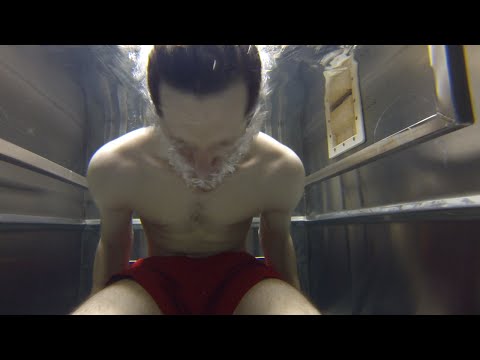12.2: Unit 4 Lab- Hydrostatic Weighing
- Page ID
- 17817
Hydrostatic Weighing
Materials:
- graduated cylinder (required for displacement method, but not required for hydrostatic weighing method)
- plastic bin to contain spills
- object to submerge
- calculator
- scale with at least 0.1 gram precision
- spreadsheet and graphing software
- for distance learners, access to online forums, videos, and help features for the spreadsheet software will likely be necessary
- force sensor + computer with control and analysis software OR spring scale with 0.1 gram precision (required for hydrostsatic weighing method, but not for required for displacement method)
Objective
The objective of our lab is to determine the body density of an object in the same way we would for a person. We will determine body density in two ways, one being the displacement method and the other being hydrostatic weighing.
You might want to watch this video to refresh your memory regarding the general process for hydrostatic weighing:
General Methods
The video above does not explain how to actually calculate the body fat percentage (BF%) from the hydrostatic weighing data. The BF% calculation is done using rather complex formulas that require require body density,  , as an input:
, as an input:

Formulas for calculating body fat percentage from body density and other body measurements. Image Credit: MattVerlinich via Instructables
 ), under water weight (
), under water weight ( ), water density (
), water density ( ) and residual lung volume (
) and residual lung volume ( ). The hydrostatic weighing process provides
). The hydrostatic weighing process provides  ,
,  , and
, and  . Residual lung volume can be calculated from empirical equations that depend on age, height, and gender. We will not need to account for
. Residual lung volume can be calculated from empirical equations that depend on age, height, and gender. We will not need to account for  or residual intestinal gasses (the 0.1 value in the
or residual intestinal gasses (the 0.1 value in the  equation) today because our object is solid.
equation) today because our object is solid.Hydrostatic Weighing Method (require force sensor or spring scale)
Measure the body weight of your object in air and record here:___________
If your measurement device provided you with mass instead of weight, then calculate the object weight. You may need to look up the equation relating mass and weight of an object near the surface of the Earth. Show your work.
Submerge the object and measure the under water weight, also known as the apparent weight. Record here:___________
Again, if your measurement device provided you with mass instead of weight, then calculate the object weight. Show your work.
Based on your measured weight and apparent weight, what must be the size of the buoyant force?
Use Archimedes’ Principle to determine the weight of the water displaced by the object. Explain your reasoning.
Calculate the mass of the water displaced. You may need to look up the equation relating mass and weight of an object near the surface of the Earth. Show your work.
Look up the density of water and record here:________
Now use the definition of density to find the volume of the displaced water. Show your work.
How does the volume of displaced water compare to the volume of the object? Explain your reasoning (remember, the object was completely submerged).
Now you know the body volume of the object, so if you know its body mass then you can calculate its body density. If you already have body mass from an earlier measurement calculate the body density. If you only know body weight from an earlier measurement then calculate the body mass from body weight, then calculate body density. Show all work.
 shown at the front of the lab. Just to make sure, use the
shown at the front of the lab. Just to make sure, use the  formula to calculate body density, only leaving out the part accounting for residual body gasses. Show your work.
formula to calculate body density, only leaving out the part accounting for residual body gasses. Show your work.Does the formula result agree with your previous result?
Displacement Method (requires graduated cylinder)
Measure the body mass of your object and record here:__________
If your measurement device only provided you with body weight, then calculate the body mass. You may need to look up the equation relating mass and weight of an object near the surface of the Earth. Show your work.
Submerge your object in the graduated cylinder and measure the change in volume. This is the volume of water displaced by the object.
Record displaced volume here:__________
How does the volume of displaced water compare to the volume of the object? Explain your reasoning (remember, the object was completely submerged).
Calculate the density of your object. Show your work.
How does your result compare to your previous results using the hydrostatic method?
Body Fat Percentage
Use the body fat percentage formula to calculate the body fat percentage of your object. Show your work. Does the result seem reasonable?



